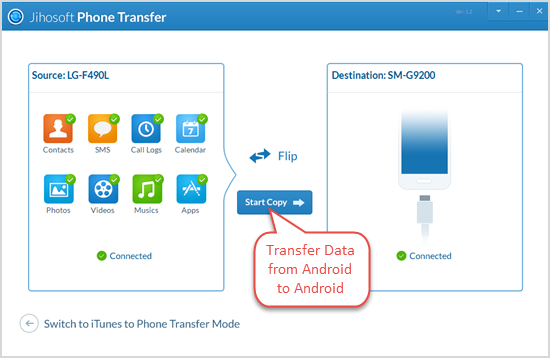
An x509 is a digital certifcate that verifies the public keys belong to the computer, user or service identity. These certificates allow users to create secure connections with their web browsers, and to protect sensitive data on the internet. They rely upon the widely accepted X.509 PKI Standard (Public Key Infrastructure).
What is an X.509 Certificate?
X.509 standards are a collection of international standards created by the Internet Engineering Task Force and National Institute of Standards and Technology. They enable servers and users to communicate safely over the Internet. It contains several protocols like SSL and TLS. HTTPS is a protocol type that enables encrypted data transmissions between web browsers and servers.
Why should we use X509 certificates?
The X509 protocol uses a hierarchical trust system that allows different types and combinations of digital certificates be used to verify the entity's authenticity. It requires that every certificate is signed by a Certificate Authority.

CAs must sign all other certificates to ensure that anyone whose identity they verify will be trusted. The CAs do this by using a variety verification methods including public key cryptography, certificate validation algorithms and other techniques.
A CA is also responsible for implementing and managing rules that ensure the validity and security of its issued certificates. These rules include revocation lists that remove certificates which do not meet the requirements, and disavowing non-conforming CAs or compromised CAs.
Certification Path Verification
CAs will use a variety of verification techniques on a certificate to validate it. These include recursive cryptography and encoding. In addition to this, a CA is required to follow a certificate path validation algorithm. This involves the recursive including of intermediate certs that are then sign by other certs, ultimately reaching an end entity certificate.
When a CA issuing a certifcate, it must provide an unique certificate identifier which is unique to the certifcate. This can be an email address or ID number.

These identifiers, which are part of a digital certificate's content, are stored in files such as DER. The format of these files may or may be incompatible with certain web browsers or applications.
What are X509 certificate extensions?
X509 v3 certificates can contain multiple certificate extensions that define additional attributes. These additional attribute are used to maintain a certificates hierarchy, revocations or other information on the holder. These attributes are useful for a variety of purposes, including role-based security and access control.
How do you store X509 certificates?
Despite the name of X509, certificates can be saved in a number of different formats. Most companies and organisations store their X509 certs in either PEM or DER format. DER encoding is a widely used encoding that can read by some web browsers. However, it's not compatible in all applications.
FAQ
How much does it cost to build a website?
This question will depend on your goals for your website. For instance, if you just want to post information about yourself or your business, you might be able to get away with free services such as Google Sites.
However, if visitors are serious about coming to your site, they will be willing to pay more.
A Content Management System (like WordPress) is the best solution. These programs allow you to create a website without knowing anything about programming. This is because the sites are hosted and maintained by third-party companies. You don't have any risk of being hacked.
Squarespace is another way to create a website. You can choose from a range of plans, ranging in price from $5 to $100 per monthly depending on what you need.
How much do web developers make?
When working on a website for yourself, you'll probably earn around $60-$80 per hour. Independent contractors are a better option if your goal is to charge more. It is possible to charge between $150-200 an hour.
How Much Does it Cost to Create an Ecommerce Website?
It all depends on what platform you have and whether or not you hire a freelancer. eCommerce sites usually start around $1,000.
Once you have chosen a platform, expect to pay between $500 and $10,000.
You won't spend more than $5,000 if you are using a template. This includes any customizations required to reflect your brand.
Can I make my website using HTML and CSS?
Yes! If you've been following along so far, you should now understand how to start creating a website.
Now that you are familiar with how to create a website's structure, you will also need to be familiar with HTML and CSS programming.
HTML stands as HyperText Markup Language. It's like creating a recipe for a dish. You'd list ingredients, instructions, and directions. Similarly, HTML tells a computer which parts of text appear bold, italicized, underlined, or linked to another part of the document. It's the language for documents.
CSS stands as Cascading Stylesheets. It is like a stylesheet that you use to create recipes. Instead of listing out each ingredient and instruction, you write down general rules for things like font sizes, colors, spacing, and more.
HTML tells the browser what HTML is and CSS tells it how.
Don't be afraid to ask questions if you don’t understand any of these terms. Follow the tutorials and you will soon be creating beautiful websites.
Statistics
- When choosing your website color scheme, a general rule is to limit yourself to three shades: one primary color (60% of the mix), one secondary color (30%), and one accent color (10%). (wix.com)
- At this point, it's important to note that just because a web trend is current, it doesn't mean it's necessarily right for you.48% of people cite design as the most important factor of a website, (websitebuilderexpert.com)
- Is your web design optimized for mobile? Over 50% of internet users browse websites using a mobile device. (wix.com)
- It enables you to sell your music directly on your website and keep 100% of the profits. (wix.com)
- It's estimated that chatbots could reduce this by 30%. Gone are the days when chatbots were mere gimmicks – now, they're becoming ever more essential to customer-facing services. (websitebuilderexpert.com)
External Links
How To
How can I start as a UI Designer
Two ways to be a UI designer are available:
-
You can earn a degree in UI Design by going to school.
-
You can go freelance.
To go to school, you will need to enroll in college or university for four years. This covers art, business, psychology, and computer science.
You can also take classes at community colleges or state universities. Some schools offer tuition-free programs while others charge tuition.
You will need to find work after graduation. If you choose to work for yourself, you must build your client base. You should network with other professionals to let them know that you exist.
Internships are also available at web application development companies. Many companies employ interns to gain practical experience before hiring full time employees.
A portfolio will help you get more work once you have established it. Your portfolio should include work samples as well as details of the projects that you have worked on.
It's a smart idea for you to send your portfolio by email to potential employers.
As a freelancer, you will need to market yourself. Advertise your services on job boards such as Indeed, Guru, Guru, and Upwork.
Freelancers often receive assignments from recruiters who post openings online. These recruiters find qualified candidates for specific jobs.
These recruiters provide candidates with a project description that details the position's requirements.
A freelancer is not required to sign a long-term contract. However, if you plan to move forward, it is best to negotiate an upfront payment.
Many designers prefer working directly for clients and not through agencies. This may sound ideal but many people lack the skills.
Agency workers have a deep understanding of the industry in which they are working. They can also access specialized training and resources that will allow them to produce top-quality work.
These benefits are not the only ones. Agency workers typically receive a higher hourly wage.
However, the disadvantage of working with an agency is not having direct contact with your employer.
To succeed as a UI designer, you must be self-motivated, creative, organized, flexible, detail-oriented, analytical, and communicative.
Also, you must have excellent communication skills both verbally and in writing.
UI designers design websites by designing user interfaces (UI), and visual elements.
They are also responsible to ensure the site meets user needs.
This involves understanding the information users need and how to make your site work.
Wireframes are created by UI designers using a variety of tools. Before they begin designing, wireframing allows them to visualize the page's layout.
There are many wireframe templates available online. Anyone can create their own wireframes.
Some designers focus solely on UI design, while others combine UI design with graphic design.
Photoshop is a popular software used by graphic designers for editing images.
They then use Adobe InDesign to lay out pages and layouts.
Photographers capture images using digital cameras or DSLRs.
They then upload the images to a program for photo editing, where they add text captions and filters.
The photographer saves the image to a file compatible with the website.
It is important to take into consideration all aspects of the design process when building a website.
This includes research as well planning, wireframing. prototyping. testing. coding. content creation. and publishing.
Research – It is essential to do extensive research before you begin a new project.
Planning – Once you've done your research, you will want to start developing a plan.
Wireframing – A wireframe is a preliminary sketch or drawing of a webpage or application.
Prototyping – Prototypes are used to verify that the final product is consistent with the original vision.
Testing – The prototype should go through multiple rounds to be tested in order for it to work properly.
Coding – Coding is the art of writing computer codes.
Content Creation - This includes everything from managing social media accounts to writing copy.
Publishing entails uploading files to a server and ensuring the site is accessible.
You'll need to be able to understand the different projects you work on as a freelance UX/UI Designer.
Some companies, for example, only need wire frames. Others require complete prototypes.
You might be required to do certain tasks, depending on what type of project it is.
For instance, if your job is to create wireframes you might have to make several over the course of time.
If you're hired to create a complete prototype, you may be required to develop a fully functional version of the site.
No matter what type of project you are working on, it is important to have good interpersonal skills.
Referrals are the most common way that clients hire freelancers. You must establish solid relationships with potential employers.
A communication skill is essential, both verbally or in writing.
A portfolio is an essential part any freelancer's arsenal.
It is a showcase of your work and a demonstration of your ability produce high-quality outputs.
You can take care of this by creating a professional portfolio online.
The best way to get started is to find websites similar to yours.
Search these websites to view the details of each site.
Once you identify what you think are the best practices, go ahead and adopt them.
It's also useful to include links from your portfolio in your resume.